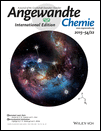2D Zeolite Coatings: Langmuir–Schaefer Deposition of 3 nm Thick MFI Zeolite Nanosheets†
Financial support for this work was provided by the deanship of scientific research at King Abdulaziz University D-003/433 and from the Department of Energy, Office of Basic Energy Sciences, Division of Chemical Sciences, Geosciences and Biosciences under award number DE-FG-02-12ER16362. The Langmuir–Blodgett trough instrumentation purchase and maintenance was supported by the NSF (grant numbers DMR 1207544 and CHE 1040126). K.V.A. acknowledges support by a DDF fellowship granted by the University of Minnesota. B.T. acknowledges support from the Scientific and Research Council of Turkey (TUBITAK, grant number BIDEP-2219). Parts of this work were conducted at the Characterization Facility of the University of Minnesota and the Minnesota Nanocenter (formerly NFC), which receive partial support from the NSF through the MRSEC and NNIN programs, respectively.
Graphical Abstract
Zeolite films: Acid treatment was used to prepare stable suspensions of MFI zeolite nanosheets in ethanol. Nanosheets from these suspensions showed high surface activity and could be transferred using the Langmuir–Schaefer technique to obtain monolayer coatings (3 nm thick). Secondary growth of the monolayer coatings resulted in sub-12 nm intergrown zeolite thin films.
Abstract
Stable suspensions of zeolite nanosheets (3 nm thick MFI layers) were prepared in ethanol following acid treatment, which partially removed the associated organic structure-directing agent. Nanosheets from these suspensions could then be dispersed at the air–water interface and transferred to silicon wafers using Langmuir–Schaefer deposition. Using layer-by-layer deposition, control on coating thickness was demonstrated. In-plane X-ray diffraction (XRD) revealed that the deposited nanosheets contract upon calcination similar to bulk MFI crystals. Different methods for secondary growth resulted in preferentially oriented thin films of MFI, which had sub-12-nm thickness in certain cases. Upon calcination, there was no contraction detectable by in-plane XRD, indicating well-intergrown MFI films that are strongly attached to the substrate.





